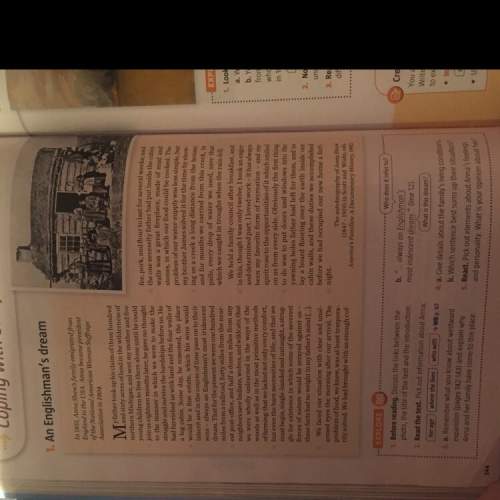By S. E. Forman

English, 05.10.2020 15:01, lwattsstudent
PLS HELP ASAP DUE IN 28 MINUTES!! :(
STORIES OF USEFUL INVENTIONS, excerpt
By S. E. Forman
1911
THE MATCH
There never was a time when the world was without fire, but there was a time when men did not know how to kindle fire; and after they learned how to kindle one, it was a long, long time before they learned how to kindle one easily. In these days we can kindle a fire without any trouble, because we can easily get a match; but we must remember that the match is one of the most wonderful things in the world, and that it took men thousands of years to learn how to make one. Let us learn the history of this familiar little object, the match.
Fire was first given to man by nature itself. When a forest is set on fire by cinders from a neighboring volcano, or when a tree is set ablaze by a thunderbolt, we may say that nature strikes a match. In the early history of the world, nature had to kindle all the fires, for man by his own effort was unable to produce a spark. The first method, then, of getting fire for use was to light sticks of wood at a flame kindled by nature—by a volcano, perhaps, or by a stroke of lightning. These firebrands were carried to the home and used in kindling the fires there. The fire secured in this way was carefully guarded and was kept burning as long as possible. But the flame, however faithfully watched, would sometimes be extinguished. A sudden gust of wind or a sudden shower would put it out. Then a new firebrand would have to be secured, and this often meant a long journey and a deal of trouble.
In 1827, John Walker, a druggist in a small English town, tipped a splint with sulphur, chlorate of potash, and sulphid of antimony, and rubbed it on sandpaper, and it burst into flame. The druggist had discovered the first friction-chemical match, the kind we use to-day. It is called friction-chemical because it is made by mixing certain chemicals together and rubbing them. Although Walker's match did not require the bottle of acid, nevertheless it was not a good one. It could be lighted only by hard rubbing, and it sputtered and threw fire in all directions. In a few years, however, phosphorus was substituted on the tip for antimony, and the change worked wonders. The match could now be lighted with very little rubbing, and it was no longer necessary to have sandpaper upon which to rub it. It would ignite when rubbed on any dry surface, and there was no longer any sputtering. This was the phosphorus match, the match with which we are so familiar.
How does the author develop the idea that humanity's early fire-starting tools may have been dangerous? Please respond in three to five complete sentences, using evidence from the text to support your answer. (5 points)

Answers: 1
Other questions on the subject: English

English, 21.06.2019 15:00, groverparham3
The pattern formed by the rhyme at the end of each line is called repetition allusion meter rhyme scheme
Answers: 1

English, 22.06.2019 01:30, giiffnlojd
Asentence teacher gives the following speech. prepare a brief speech to accompany your science project. the speech will be presented to a faculty panel selected as judges. include a summary of your hypothesis, methods, and results. provide an explanation of any pictures or charts one of your poster. also share any complications you encountered during the science fair process. who is the intended audience for the teachers speech? a. young students. b. peers at the science fair. c. teacher evaluators. d. science professionals
Answers: 2

English, 22.06.2019 04:30, rostecorralmart
The room was gaudy with its leather couch and purple walls
Answers: 2

English, 22.06.2019 05:00, tmrodriguez1
What can you infer about esperanza's character from the fact that she argues three days with her mother trying to persuade her to write the note?
Answers: 2
Do you know the correct answer?
PLS HELP ASAP DUE IN 28 MINUTES!! :(
STORIES OF USEFUL INVENTIONS, excerpt
By S. E. Forman
By S. E. Forman
Questions in other subjects:

Health, 19.08.2019 04:30

Social Studies, 19.08.2019 04:30



Physics, 19.08.2019 04:30

Mathematics, 19.08.2019 04:50


Mathematics, 19.08.2019 04:50

History, 19.08.2019 04:50

Mathematics, 19.08.2019 04:50







